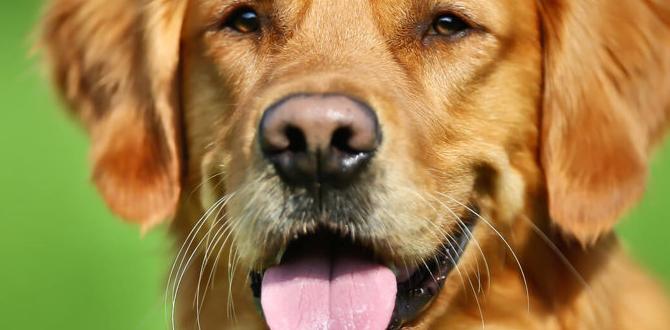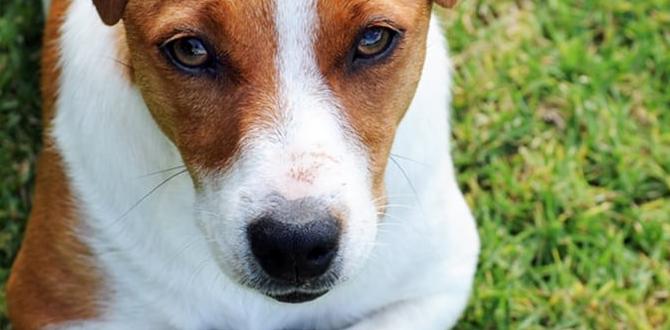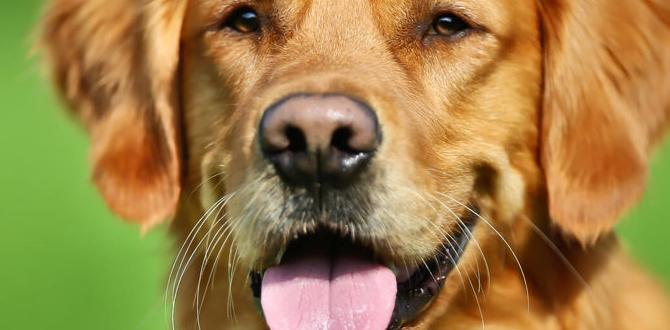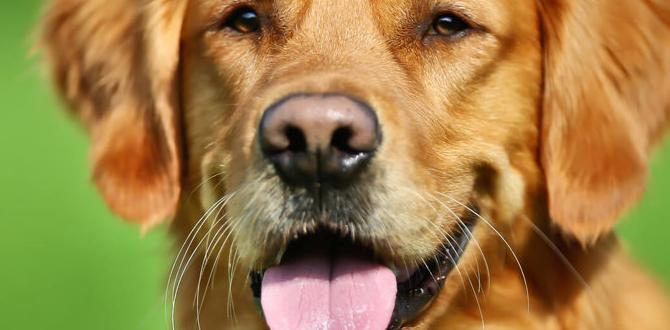Have you ever seen a dog bark when left alone? That might be separation anxiety. Dogs feel upset when their owners leave. How can you help your furry friend feel better fast? Let’s dive into some ways to manage separation anxiety in dogs fast. Dogs are like family. They need love and care, just like us!
Key Takeaways
- Separation anxiety in dogs is common and treatable.
- Training can reduce separation anxiety in dogs fast.
- Calming techniques help dogs feel safe and relaxed.
- Toys and distractions ease anxiety when owners leave.
- Consistent routines make dogs feel more secure.
Understanding Separation Anxiety in Dogs
Separation anxiety happens when dogs feel scared being alone. It can cause barking, chewing, or even accidents. Some dogs have mild anxiety, while others struggle more. If your dog seems upset when left alone, they might be dealing with this. Dogs love being around their family. They feel happy when everyone is together. But what happens when you leave? Dogs can get worried. They fear not seeing you again. Understanding why this happens is the first step to helping your pup. Let’s see how we can make them feel better.
- Watch for signs like barking or whining.
- Chewing on furniture signals stress.
- Pacing is a sign of unease.
- Accidents indoors can happen.
- Excessive drooling shows nervousness.
- Try soothing voices and calming music.
Knowing these signs helps you spot anxiety early. You’ll be able to address the problem quickly. Dogs can’t tell us how they feel, but their actions speak loudly. Pay attention to what your dog is trying to say. Helping them feel secure is key. Soon, you’ll see happier tail wagging and more relaxed behavior.
Fun Fact or Stats : Did you know? About 20% of dogs suffer from separation anxiety. That’s a lot of anxious pups!
Why Do Dogs Get Separation Anxiety?
Have you ever wondered why dogs get anxious? Like us, dogs feel emotions. Changes can make them nervous. A new home, changes in the family, or even a new schedule can trigger anxiety. Imagine moving to a new city. It can feel scary, right? Dogs feel the same way. They thrive on routine. When things change, they feel unsettled. Spending time understanding your dog’s triggers is important. Once you know what causes their anxiety, you can work to help them. Solutions can be simple, like sticking to a routine or providing comforting toys. These steps can make a big difference.
How Can You Help Your Dog Feel Safe?
Caring is the first step in helping your dog. Start with simple changes. Create a safe space with their favorite toys. Spend time training your dog to be alone. Begin with short periods, then gradually increase the time. Use treats to reward calm behavior. Ever felt better with a cozy blanket? Dogs have comfort items too. Find what soothes your dog. Playtime and exercise also help. A tired dog is a calm dog. Soon, your pup will be relaxed and happy, even when alone.
Can Training Make a Difference?
Training can make a huge difference for anxious dogs. Just like learning to ride a bike, practice makes perfect. Start with small steps. Teach your dog to sit and stay. Praise them for good behavior. Slowly increase the distance between you and your dog. Always come back with a reward. This builds trust. Your dog learns you’ll always return. Training sessions can be short, but regular. Keep them fun. With patience, your dog will feel confident and less anxious.
Solutions for Separation Anxiety in Dogs
There are many ways to ease your dog’s anxiety. Start by making departures and arrivals low-key. This helps your dog feel calm. You can also try calming products like sprays or collars. Music or white noise can soothe anxious dogs. Imagine your favorite song playing when you’re worried. It’s calming, right? Dogs feel the same way. Another option is doggy daycare. There, your dog can play with friends while you’re away. If you’re not sure where to start, consult a professional trainer. They can guide you and provide tailored advice. Your dog will soon feel happier and more secure.
- Keep greetings and goodbyes calm.
- Use calming sprays or collars.
- Play soothing music for your dog.
- Consider doggy daycare for socialization.
- Ask a professional trainer for help.
- Ensure your dog gets regular exercise.
- Offer comforting toys and blankets.
Finding the right solution may take time. Be patient and consistent. Your dog relies on you to feel safe. Soon, they’ll trust being alone, knowing you’ll always return. Watch as their confidence grows. With every step, you’re helping your pup live a happier life.
Fun Fact or Stats : Dogs with a consistent routine are 50% less likely to develop anxiety.
Should You Use Calming Products?
Calming products can be very helpful. Have you tried a lavender pillow to sleep better? Similar products exist for dogs. Calming sprays, collars, and diffusers use natural scents. These help your dog relax. Not every product works for every dog. It’s important to try different options. Some dogs also enjoy calming music. Like us, dogs have preferences. Discovering what works is a fun journey. Remember to always consult your vet before trying new products. Safety is key. Your dog will appreciate the effort you put into their comfort.
Is Doggy Daycare a Good Idea?
Doggy daycare is a great option for social dogs. Like going to school, it offers learning and play. Dogs love making new friends. At daycare, they can run, play, and enjoy themselves. If your dog enjoys other dogs’ company, daycare might suit them well. But not all dogs like being in groups. If your dog is shy, a pet sitter might be better. Observe how your dog reacts around others. Their happiness and comfort matter most. A happy dog means fewer worries. With the right choice, your dog can have a joyful experience.
Why Is Exercise Important?
Exercise is key to a happy dog. Imagine sitting inside all day. Boring, right? Dogs love running and playing. Exercise keeps them fit and relieves anxiety. A walk in the park is not just fun, but also calming. It lets your dog explore and use energy. When dogs are tired, they feel relaxed. Aim for daily walks or playtime. If your yard is fenced, let your dog roam. Fetch games are also great. Keeping your dog active helps prevent anxiety. Soon, your pup will be content and stress-free.
| Solution | Effort Level | Cost | Effectiveness |
|---|---|---|---|
| Training | High | Low | Very Effective |
| Calming Products | Medium | Moderate | Effective |
| Doggy Daycare | Low | High | Very Effective |
| Exercise | High | Low | Effective |
How Routines Help With Separation Anxiety
Routines are important for dogs. They feel secure knowing what’s next. Like us, dogs like knowing when meals or walks happen. Building a daily schedule helps them relax. Imagine a day where everything goes as planned. It feels good, right? Dogs enjoy that feeling too. Start by feeding and walking your dog at the same times. Consistent bedtime routines also help. When dogs know what to expect, they’re less anxious. Changes can cause stress. Stick to daily patterns to keep your dog happy and calm.
- Feed your dog at the same times daily.
- Keep walk times consistent.
- Establish a bedtime routine.
- Limit changes to the schedule.
- Include playtime every day.
- Maintain a calm environment.
- Ensure quiet time for relaxation.
Routines are comforting. They show your dog they can trust their environment. With time, your dog will feel more at ease. They will look forward to their day. By providing stability, you show your dog love and care. A happy dog means a happy home. Enjoy watching your dog’s confidence grow every day.
Fun Fact or Stats : Dogs with a stable routine have lower cortisol levels, showing reduced stress.
What Makes a Good Daily Routine?
Have you ever had a perfect day? Everything went smoothly, right? Dogs feel the same way. A good routine includes meals, walks, and play. Add quiet time for rest. Consistency is the key. Start the day with a morning walk. It gets your dog ready. Meals at the same time help digestion. Playtime keeps them active and happy. End the day with a calm walk. This routine allows predictability. Dogs like knowing what happens next. Good days lead to less anxiety. Enjoy creating a routine that suits you and your pup.
What Happens When Routines Change?
Changes in routine can upset dogs. Have you ever missed breakfast? It’s confusing, right? Dogs feel the same about schedule changes. They rely on routines to feel secure. Unexpected changes can cause anxiety. If changes are needed, do them gradually. Introduce new activities slowly. Always provide comfort and reassurance. If a new job changes your schedule, try adjusting feeding times. Spend extra time calming your dog. Your dog will adjust with your help. Soon, they’ll feel settled again. Routine changes don’t have to be stressful. Patience and love make transitions smooth.
How Do Consistent Routines Help Anxiety?
Routines prevent anxiety. They offer stability and predictability. Imagine knowing what to expect every day. It’s calming, right? Dogs thrive on this. When dogs know their routine, they’re less stressed. Consistent feeding and walk times help. Regular play and rest times are also important. These routines reduce anxiety. They show your dog they are safe and loved. Dogs trust their day will go smoothly. Creating a reliable routine takes time. But the benefits are worth it. A consistent routine will make your dog happy, relaxed, and confident.
Conclusion
Helping your dog with separation anxiety takes patience. Use training and routines to soothe them. Find what works best for your dog. Remember, small steps can lead to big changes. Your support will make your pup feel secure. Soon, they’ll manage their separation anxiety fast. Enjoy a happier, wagging tail every day.
FAQs
Question: How can I tell if my dog has separation anxiety?
Answer: Look for signs like barking, chewing, or accidents indoors. Pacing or excessive drooling can also indicate stress. These behaviors happen when your dog is left alone. Observing these clues helps you understand if your dog is anxious.
Question: What are quick ways to help with separation anxiety in dogs fast?
Answer: Start with calming techniques and consistent routines. Use soothing music or calming products. Toys and distractions can help. Training and exercise are also key. These methods provide comfort and reduce anxiety quickly.
Question: Can a vet help with my dog’s anxiety?
Answer: Yes, vets can offer guidance and solutions. They might suggest calming products or training. They can rule out any medical causes. Consulting a vet is a good step if you’re unsure how to help. They can create a personalized plan for your dog.
Question: Are there specific breeds more prone to separation anxiety?
Answer: Some breeds are more prone, like Labrador Retrievers, Cavalier King Charles Spaniels, and Border Collies. These dogs often seek human companionship. Regardless of breed, any dog can develop anxiety. It’s important to watch your dog’s behavior and address any concerns.
Question: What are the best toys to help with separation anxiety?
Answer: Try interactive or puzzle toys. These keep your dog’s mind busy. Chew toys or toys with treats inside can also help. The goal is to distract and entertain your dog. Different dogs like different toys, so try a few options.
Question: How can training reduce separation anxiety fast?
Answer: Training builds confidence. Start with short periods alone, praising calm behavior. Gradually increase time apart. This teaches your dog that you’ll return. Training with rewards creates trust. Over time, your dog feels secure and less anxious.
Meet Elyse Colburn, the devoted canine companion and storyteller behind the enchanting world of “Tales, Tails, and Adventures Unleashed.” A passionate dog enthusiast with a heart full of paw prints, Elyse Colburn shares heartwarming tales and insightful adventures, celebrating the joy, loyalty, and endless antics that make every dog a true hero. Join Elyse Colburn on this tail-wagging journey, where every post is a love letter to our four-legged friends.







